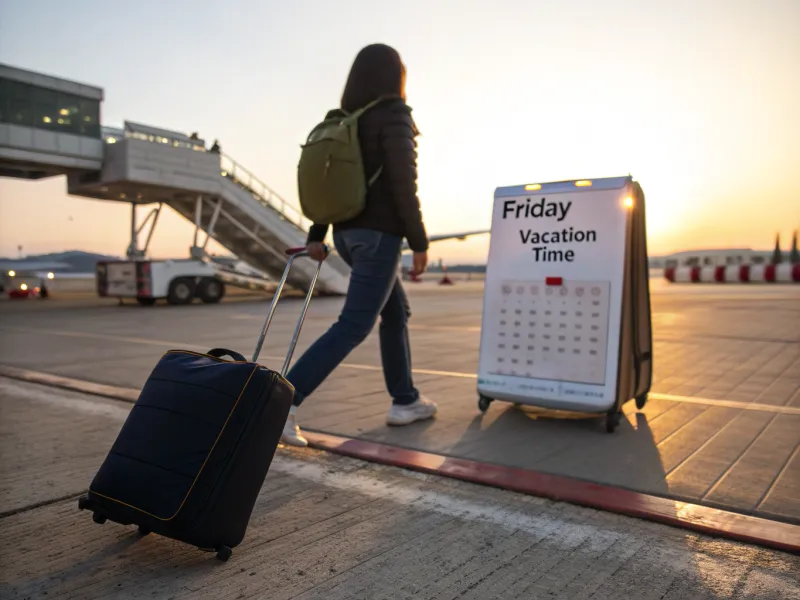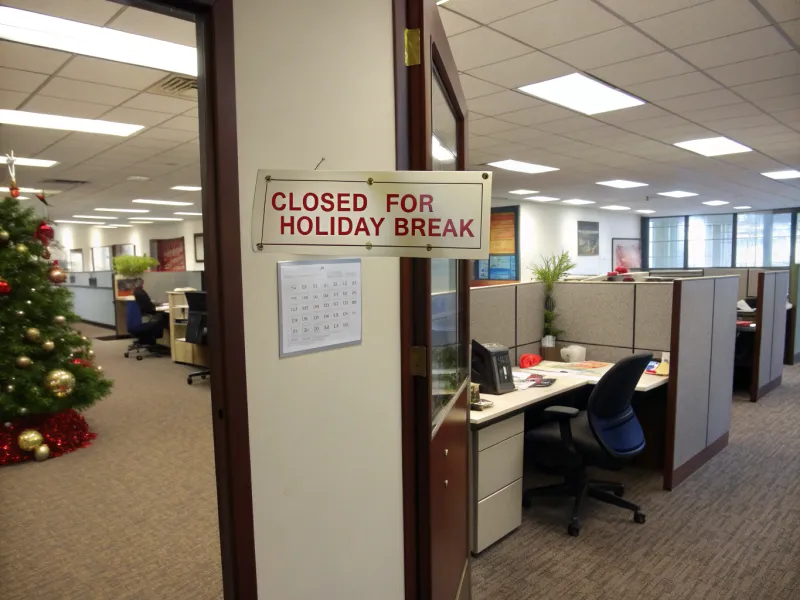Use These 12 Planning Tips To Turn 10 PTO Days Into A Month Off

What if I told you that your 10 measly PTO days could unlock almost a full month away from the grind? Sounds like magic, but it’s all about smart planning. By aligning your time off with national holidays and tacking on weekends, you can stretch those limited days into long, meaningful getaways.
Over the years, I’ve turned scattered PTO into epic road trips, international escapes, and blissful staycations—without burning through all my vacation time at once. It’s not just about where you go, but when you go. Want to sneak in a nine-day trip using only four days off? Or score a full week of travel with just two PTO days?
I’ve got you. Curious how to game the calendar and reclaim your time? Let’s break down the hacks that’ll have you out of the office and on the move—more often than you ever thought possible.
1. Stack Around Holidays

Holidays are your secret weapon for extended time off. By placing your PTO days immediately before or after official holidays, you’re essentially getting free vacation days courtesy of your employer.
For example, taking 4 PTO days around Thanksgiving (which falls on a Thursday) can give you a solid 9-day break. Most companies already give Thursday-Friday off, so adding Monday-Wednesday before and the following Monday creates an extended vacation with minimal PTO usage.
The Christmas to New Year’s period offers similar opportunities – many companies slow down anyway, making it the perfect time to disappear with minimal workplace disruption.
2. Use Long Weekends

Federal holidays that create three-day weekends are perfect foundations for mini-vacations. Taking just 2 PTO days after a Monday holiday gives you 5 consecutive days off – that’s half a standard vacation using minimal leave!
Memorial Day, Labor Day, and Presidents’ Day are ideal candidates for this approach. If you take Tuesday and Wednesday off following these Monday holidays, you’ll return to work on Thursday when many colleagues are still catching up, making your transition back smoother.
Planning multiple trips around long weekends throughout the year can add up to several weeks of vacation time while barely denting your PTO balance.
3. Plan Way in Advance

Early birds catch more than worms – they secure prime vacation slots before everyone else. I always mark potential vacation periods on my calendar a full year ahead, then submit requests as soon as my company’s booking window opens.
This forward-thinking approach gives you first pick of popular periods like the days surrounding July 4th or Memorial Day. Many organizations have policies where earlier requests take precedence when multiple people want the same days off.
Advanced planning also means better travel deals, as you can book flights and accommodations months ahead when prices are lower and availability is higher.
4. Combine With Remote Days

If your job offers flexible work arrangements, remote days can be powerful vacation extenders. Instead of using PTO for travel days, work remotely while en route to your destination or during your first day there.
For instance, fly out on Thursday evening after work, then work remotely on Friday from your beach house or mountain cabin. Your vacation feeling starts Thursday night, but you only begin using PTO on Monday!
This strategy works especially well for domestic trips within your time zone. Just make sure you have reliable internet access and can maintain your normal productivity levels to avoid creating problems with your team.
5. Travel Over Weekends

Making weekends your dedicated travel days preserves precious PTO for actual destination time. I’ve mastered taking Friday evening flights after work and returning on Sunday evening, spending only weekdays at my destination using PTO.
Though travel days might feel tiring, they’re worth it when you realize you’ve saved 2-4 PTO days that can be applied elsewhere. Red-eye flights, while not the most comfortable, can be particularly effective here – sleep on the plane and wake up at your destination ready for adventure.
Did you know? A 9-day vacation (Saturday to Sunday of the following weekend) can require just 5 PTO days when you travel on weekends.
6. Save Fridays and Mondays

Mondays and Fridays are premium PTO real estate. Taking just these days off creates three-day weekends without touching your midweek schedule.
If you take all 10 PTO days as Mondays and Fridays, you’ll create five separate long weekends throughout the year. This approach works wonderfully for domestic trips or staycations where you don’t need extended travel time.
Your colleagues will barely notice your absence since you’re never missing more than one day from any work week. Plus, you’ll always return refreshed after short breaks rather than facing the post-vacation blues that often follow longer absences.
7. Book Red-Eye Flights

Night flights might sound exhausting, but they’re vacation-extending magic. By flying overnight, you essentially sleep through your travel time instead of burning daylight (and PTO) sitting on a plane.
Red-eyes allow you to work a full day, board an evening flight, and wake up at your destination – ready to start your vacation immediately. This eliminates the need to take an extra day off just for traveling.
For international trips especially, overnight flights help you adjust to time changes while saving a PTO day. Pack a good travel pillow, noise-canceling headphones, and perhaps a sleep aid (consult your doctor first) to make the experience more comfortable.
8. Use Company Closures

Many organizations have annual shutdowns or slow periods when they encourage employees to take time off. These golden opportunities often occur during summer months or between Christmas and New Year’s.
Smart planning means aligning your PTO with these periods. If your company closes December 25-31, taking January 2-5 off might give you a 16-day break while using just 4 PTO days!
Ask HR about any planned company-wide closures for the coming year during your annual review or benefits enrollment period. Some industries have predictable slow seasons – construction in winter, accounting firms after tax season – making these ideal times to disappear with minimal work disruption.
9. Bridge Gaps Strategically

Gap bridging is my favorite PTO hack. When holidays fall on awkward days (like a Tuesday or Thursday), taking the single workday between the holiday and weekend creates an extended break.
If July 4th falls on a Tuesday, taking Monday off bridges to the previous weekend for a 4-day break using just 1 PTO day. Similarly, if Thanksgiving falls on Thursday (it always does), taking the following Friday creates a 4-day weekend.
These single-day bridges are usually easier to get approved than longer absences. They’re especially valuable because they create disproportionately long breaks compared to the PTO investment – one of the highest ROI uses of your limited days off.
10. Request Key Weeks Early

Competition for prime vacation periods can be fierce. Thanksgiving week, the days before Christmas, and spring break are universally popular times when everyone wants off.
Set calendar reminders to submit these high-demand requests the exact day your company’s booking window opens – often 6-12 months in advance. Some organizations operate on a first-come, first-served basis, while others consider seniority and past holiday work patterns.
If you have flexibility, consider slightly off-peak timing. Taking the week after (rather than before) Christmas often meets less resistance from managers and colleagues, while still giving you that extended holiday feeling.
11. Add National Holidays

Each country celebrates different holidays, creating unique opportunities for international travelers. If you work for a global company or have flexible holidays, you can potentially leverage both US and foreign holidays.
For example, Canada celebrates Victoria Day and Canada Day when US offices remain open. Americans living near the Canadian border might take these days off for long-weekend trips north.
Similarly, many Latin American countries have extended celebrations for Carnival in February or early March – a perfect time to escape winter while your colleagues are still grinding away. Research destination countries’ holiday calendars when planning trips to potentially align with local festivities and closures.
12. Go International With Time Zones

Time zones can be your secret weapon for stretching vacations. Flying eastward across multiple time zones gives you more daylight hours at your destination on arrival day, while westward returns can land you home the same calendar day you departed.
For example, leaving New York Friday night for Europe means arriving Saturday morning with a full day ahead. Returning from Asia to the US, you might leave Monday night and land Monday morning – potentially getting back in time for work without using an extra PTO day!
This strategy works best for longer international trips where the time difference is substantial. Just remember to factor in recovery time from jet lag when planning your schedule.
